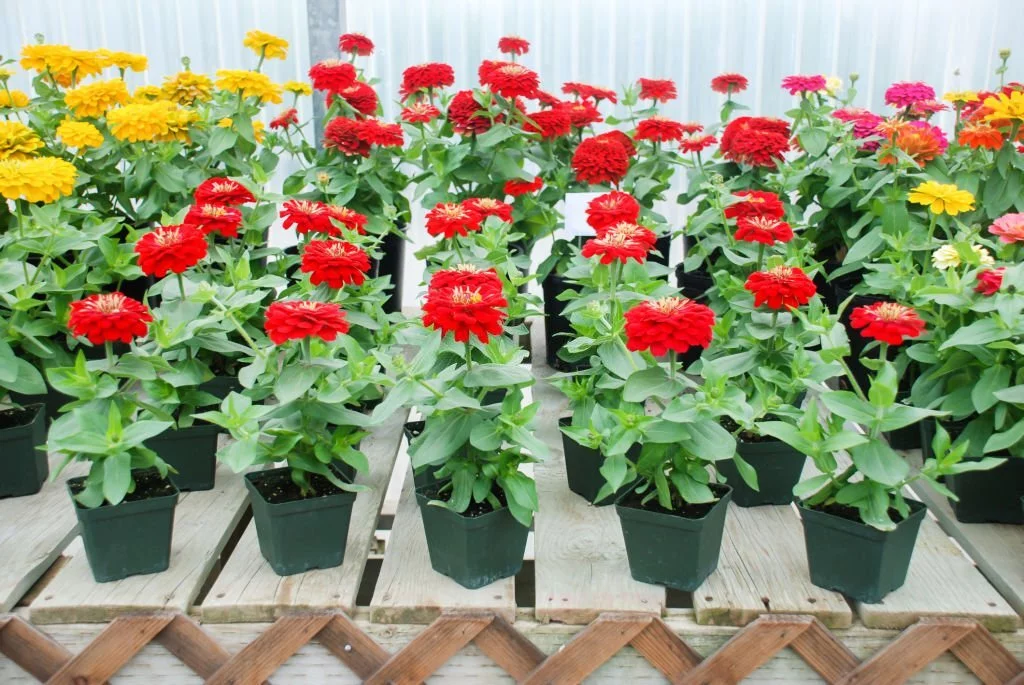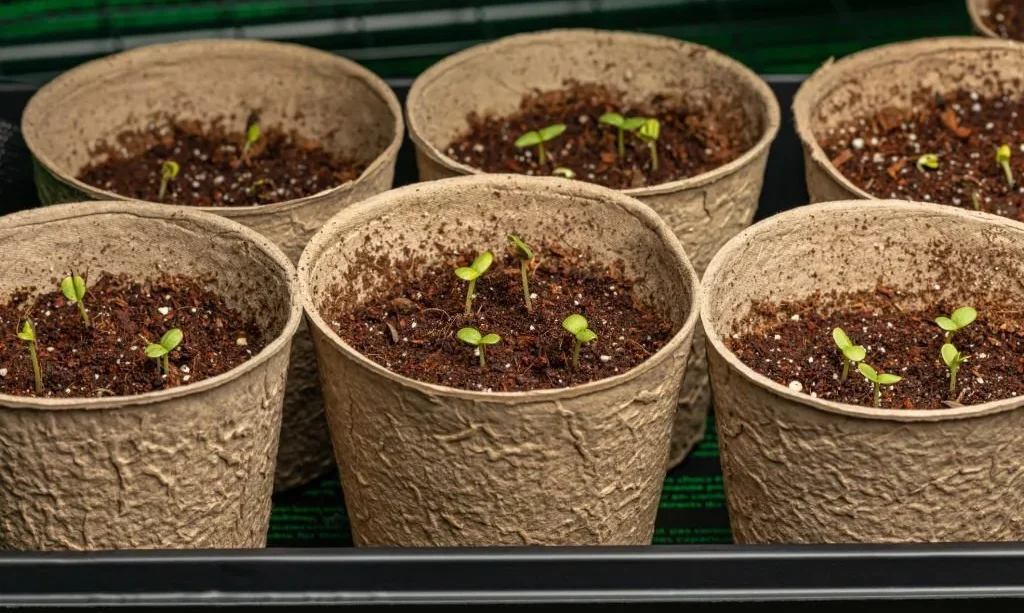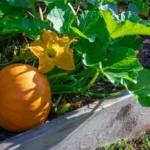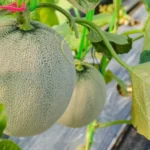There’s something truly satisfying about growing your own flowers from seeds. One of the popular flowering plants among gardeners and flower enthusiasts is the Zinnia. Known for their vibrant colors and easy-to-grow nature, Zinnias can add a splash of joy to any garden. But the key to a successful garden is knowing what you’re growing, right from the very start. So, let’s unravel the mystery of what Zinnia seedlings look like to set you off on the right path.
- Aesthetic & Versatile: Our Crouching Tiger Zinnia Seeds bloom into stunning bicolor flowers, red tipped in yellow. Ideal for both landscape decoration and vase arrangements. Experience several bloom looks as they mature.
- Gardener’s Choice: Awarded the prestigious Fleuroselect Novelty Award in 2015, these seeds grow into plants that are uniform in size and bloom time. Suitable for beginners and experienced gardeners alike.
- Easy to Grow: One of the simplest plants to cultivate from seed. Simply sow the seeds in a sunny, well-drained spot and ensure they get plenty of sun and water. Suitable for both ground and container planting.
- Long-Lasting Blooms: Enjoy a long season of color with these robust Zinnias. Beginning to bloom just 9 to 12 weeks after sowing, they continue to flourish in hot weather and with regular watering.
- Resilient & Attractive: These zinnia plants are not just beautiful but also drought, heat, and disease resistant, making them a perfect addition to your outdoor space. Attract butterflies and add vibrancy to your garden with our award-winning zinnia seeds.
The Zinnia Plant
The Zinnia, a native to Mexico, is an absolute superstar in the world of gardening. This annual plant is part of the Asteraceae family, which also includes daisies and sunflowers. Zinnias come in a multitude of varieties, differing in size, shape, and of course, color. You can find them flaunting bold and stunning shades of red, pink, orange, purple, yellow, and even green.
Growing Zinnias is a piece of cake! They love the sun, so a spot basking in full sunlight is ideal for these beauties. They also prefer well-drained soil and are fairly drought-tolerant, making them a perfect choice for newbie gardeners or those with busy schedules. With their low-maintenance nature and their ability to attract butterflies and hummingbirds, it’s no wonder Zinnias are a garden favorite. Now, let’s take a closer look at their seeds and seedlings.
What Do Zinnia Seeds Look Like?
Zinnia seeds are quite unique and easy to identify. Unlike some tiny, almost dust-like seeds you may encounter in the world of plants, zinnia seeds are larger and have a distinctive shape. They look a bit like small arrowheads or crescent moons, being wider at one end and tapering to a point at the other. They often come with a bit of the flower’s dried petal attached to them, giving them a tufted or feathered appearance. The color of the seeds can range from a light tan to a dark brown.
- Zinnia Benary Giant Deep Red Annual Seeds
- 50 seeds per pack. Product of USA
- Deep Red
- Giant Dahlia Flowered
- 48” Height
What Do Zinnia Seedlings Look Like?
Once you’ve planted your Zinnia seeds and patiently waited for them to germinate, it’s time for the next step: identifying the Zinnia seedlings. Zinnia seedlings first appear as little green shoots poking out of the soil. They have two long, narrow leaves, known as cotyledons. These are not the true leaves but serve to provide the initial nutrients for the seedling.
As the seedlings grow, they’ll start to develop their first set of true leaves. These are usually broader and heart-shaped, a stark contrast to the slender cotyledons. They’ll also begin to grow in pairs opposite each other along the stem. This is an important identifying feature of Zinnia seedlings.

Growth Stages of Zinnia
From this seedling stage, the Zinnia continues its journey to becoming a fully grown, blooming plant. The stem grows taller and the plant develops more sets of leaves. After a few weeks, you’ll see buds forming at the top of the stems.
When the buds open, you’ll be greeted with a stunning display of color. Zinnias can have single, semi-double, or double flowers, depending on the variety. Single flowers have one row of petals, semi-double have multiple rows but the center is still visible, while double flowers have so many rows of petals that the center is not visible.
After the Zinnia has finished blooming, it’ll start to develop seeds in the center of the old flower. You can collect these seeds to plant the next season, continuing the beautiful cycle of life in your garden.
Common Mistakes in Identifying Zinnia Seedlings
One common mistake in identifying Zinnia seedlings is confusing them with weed seedlings. Some weeds may look similar to Zinnias at first glance due to their green color and the shape of their initial leaves. However, remember that Zinnia’s true leaves are heart-shaped and arranged opposite each other, which is a key distinguishing feature.
Another mistake is overwatering. Although this doesn’t directly affect identification, it can make your Zinnias weak and susceptible to diseases, which can alter their appearance and growth. Zinnias prefer to be a bit on the dry side, so make sure not to waterlog them.
Tips for Growing Zinnia Successfully
Now that you know what Zinnia seedlings look like, let’s focus on how to grow them successfully.
- Full Sun: As mentioned earlier, Zinnias love sunlight. Aim for a spot with 6-8 hours of sun a day.
- Well-draining soil: Waterlogged soil can lead to root rot. Make sure your Zinnias have well-draining soil.
- Space: Zinnias need space to grow and thrive. If you’re planting multiple seedlings, make sure to space them about 6-18 inches apart, depending on the variety.
- Regular watering: While they don’t like to be waterlogged, Zinnias still need regular watering. Aim for a thorough watering at soil level to avoid getting the foliage wet, which can lead to mildew.
- Deadhead: Once your Zinnias start flowering, make sure to regularly deadhead, or remove old flowers, to encourage more blooming.
- Earth Science products combine innovative technologies with earth-friendly ingredients
- Includes a beautiful mixture of Zinnia colors.
- Easy planting
- Designed to bloom throughout the season with minimal care or maintenance.
- Water Right technology helps tell you when to water.
Conclusion
Identifying Zinnia seedlings and growing them successfully can be a rewarding journey. Remember, the key to a thriving garden is understanding what you’re growing, from seed to bloom. With this guide, you are now equipped with the knowledge to identify your Zinnia seedlings and nurture them into the vibrant, eye-catching plants they’re destined to be. So go ahead, start planting, and soon enough, you’ll have a garden bursting with color! Happy gardening!







